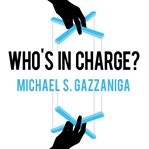Hard to break Why our brains make habits stick
Book - 2021
"Well-publicized research in psychology tells us that over half of our attempts to change habitual behavior fail within one year. Even without reading the research, most of us will intuitively sense the truth in this, as we have all tried and failed to rid ourselves of one bad habit or another. The human story of habits and the difficulty of change has been told in many books - most of which will make only a quick reference to dopamine or the "lizard brain" before moving on to practical tips and tricks for behavior change. In contrast, Stuck: The Neuroscience of Why Changing Our Behavior is So Hard will tell the brain's story about why behavior is so hard to change. Russell Poldrack offers an in-depth, yet entirely acces...sible, guide to the neuroscientific research on habits and habit change. Part I introduces the "anatomy of a habit," starting with the argument that the resilience of our habits stems largely from a mismatch between the environment in which our brains evolved and the one in which we now live, and continuing on to introduce current work on fear and anxiety, motivation, and cognitive control that bears on habit formation. Part II focuses on what neuroscience can tell us about breaking habits, introducing evidence-based strategies that give us the best possible chance to break cycles of bad behavior. Throughout the book, Poldrack offers a clear-eyed view of what neuroscience can tell us about habit change, and what it cannot - and importantly, how we know what we know"--
- Subjects
- Genres
- Self-help publications
- Published
-
Princeton :
Princeton University Press
[2021]
- Language
- English
- Main Author
- Physical Description
- xiii, 214 pages : illustrations (black and white) ; 25 cm
- Bibliography
- Includes bibliographical references and index.
- ISBN
- 9780691194325
9780691226415
- List of Illustrations
- Acknowledgments
- Part I. The Habit Machine: Why We Get Stuck
- 1. What Is a Habit?
- The Poet of Habits
- The Zoo of Habits
- Habits and Goals
- Why Do We Have Habits?
- Understanding Behavior
- A Road Map for Understanding Habits and Behavior Change
- 2. The Brain's Habit Machinery
- A System for Conscious Memory
- Enter the Lizard Brain
- What Are the Basal Ganglia?
- Dopamine: It's Complicated
- Dopamine and Brain Plasticity
- What Does Dopamine Mean?
- What about Pleasure?
- Selecting Actions in the Striatum
- 3. Once a Habit, Always a Habit
- Old Habits Never Die
- The Transition to Mindlessness
- Becoming One: Habits as Chunked Actions
- Trigger Warning: How Cues Trigger Habits
- Can't Look Away: Rewarding Stimuli Capture Attention
- A Recipe for Stickiness
- 4. The Battle for Me
- A Competition in the Brain?
- Memory System Interactions in Humans
- Formalizing the Goal-Habit Distinction
- Model-Based versus Model-Free Reinforcement Learning
- Can Goals become Habitual?
- 5. Self-Control: The Greatest Human Strength?
- What's Up Front?
- Why Is the Prefrontal Cortex Special?
- Holding Information in Mind
- The Waiting Is the Hardest Part
- Now or Later?
- Two Minds in One Brain?
- Controlling Our Impulses
- Stopping Ourselves
- The Rise and Fall of Willpower
- 6. Addiction: Habits Gone Bad
- The Intoxicating Allure of Drugs
- "This Is Your Brain on Drugs. Any Questions?"
- The Transition from Impulse to Habit
- Stress and Addiction
- Is Addiction Really about Habits?
- "My Drug of Choice Is Food"
- Digital Addiction?
- Why Do Only Some People Become Addicted?
- Part II. Coming Unstuck: The Science of Behavior Change
- 7. Toward a New Science of Behavior Change
- Behavior Change as a Public Health Problem
- A New Science of Behavior Change
- A New Approach to Behavior Change
- Targets for Intervention
- 8. Planning for Success: Keys to Successful Behavior Change
- The Architecture of Choice
- Loss Aversion and Framing
- Make Rules, Not Decisions
- Trigger Warning: Intervening on Habits
- Mindfulness: Hype or Help?
- Can Self-Control Be Boosted?
- Training Inhibition
- Envisioning Change
- Summing Up
- 9. Hacking Habits: New Tools for Behavior Change
- Can Bad Habits Be Erased?
- "I Forgot That I Was a Smoker"
- Optogenetics in Humans?
- A Neurochemical "Goldilocks Zone": Drugs to Improve Executive Function
- Toward Personalized Behavior Change
- 10. Epilogue
- Summing Up
- From Individual to Societal Change
- Notes
- Index

